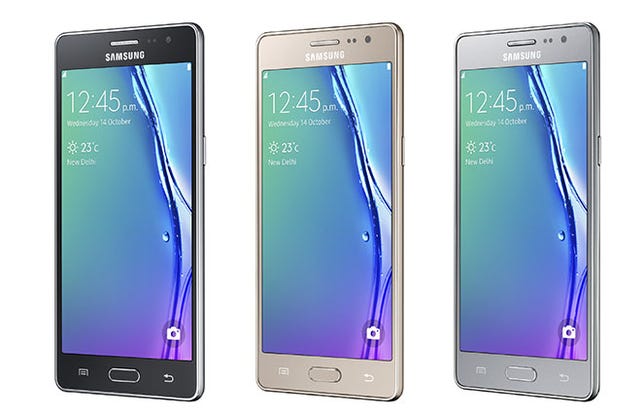 Enlarge Image
Enlarge ImageSamsung
Samsung on Wednesday unveiled its second phone powered by the company’s own Tizen software, an alternative that so far hasn’t made much headway against Google’s more widely used Android.
The Samsung Z3 is due to go on sale in India on October 21 for 8,490 Indian rupees ($131), following the release of the Z1 in the country in January.
Samsung’s most popular and successful phones are known for running Google’s Android operating system, software that ties people to Google services like Google Maps, Gmail and Google Search. But the Z3 and the Z1, designed as low-cost phones for emerging markets, use Tizen instead and allow Samsung to make its own choices for apps and services.
The Z3 features a 5-inch HD Super AMOLED display, a 1.3GHz quad-core processor and an 8-megapixel camera. The phone is supported by 1GB of memory, 8GB of expandable storage and a 2,600mAh battery. The hardware comes in a slim, metallic body with gently curved edges to the rear, but it doesn’t depart much from the standard smartphone look that prevails today.
Tizen, along with Firefox OS, Ubuntu, Blackberry OS and Windows Mobile, are second-tier alternatives to Android and Apple’s iOS, which together dominate the smartphone market. Although new operating systems can offer a fresh look and open up choices for consumers, buyers so far have showed little interest.
Samsung told CNET earlier this year that it eventually wants Tizen to be in every type of device, a move that would help it gain independence from Google. Setbacks and delays have slowed its arrival on smartphones, though. Samsung’s OS does power its Gear S2 smartwatch and several high-end televisions that the Korean company released earlier this year.
Android runs 83 percent of the world’s smartphones that were sold in the second quarter, according analyst firm International Data Corp. At the same time, Samsung is responsible for 21 percent of global smartphone sales, boasting the largest slice of the market of any handset maker.
A tactical focus for Tizen on emerging markets where smartphone adoption is still growing might be the best way to gain traction, though that strategy hasn’t worked well for Mozilla’s Firefox OS.
Earlier this year Samsung failed to meet demand for its flagship phone, the Galaxy S6 Edge. In the bigger picture, though, Samsung is struggling to compete with the slew of cheap Android devices from Chinese phone makers in the low and middle ranges of the phone market. A report released Wednesday by analyst firm Trendforce projects a decline in Samsung smartphone shipments for the first time in 2015, down 1 percent from last year.
Samsung has not said whether the Z3 will go on sale in other regions later, or whether any other devices running Tizen will launch before year’s end.
The company did not respond to a request for comment.



